Teaching your toddler to swim isn’t just a fun way to get them moving—it’s an exciting bonding experience for both of you! Swimming isn’t just good for their muscles; research says it’s great for their overall health and well-being, improving things like heart health, strength, and coordination. Plus, it’s a wonderful way for them to make new friends and learn social skills.
Watching your child’s face light up as they splash around in the water is truly magical. To make sure this experience is as enjoyable and safe as possible, we’ve asked experts for their best tips. They’ve shared top tips on how to help your little one dive into swimming with confidence and joy.
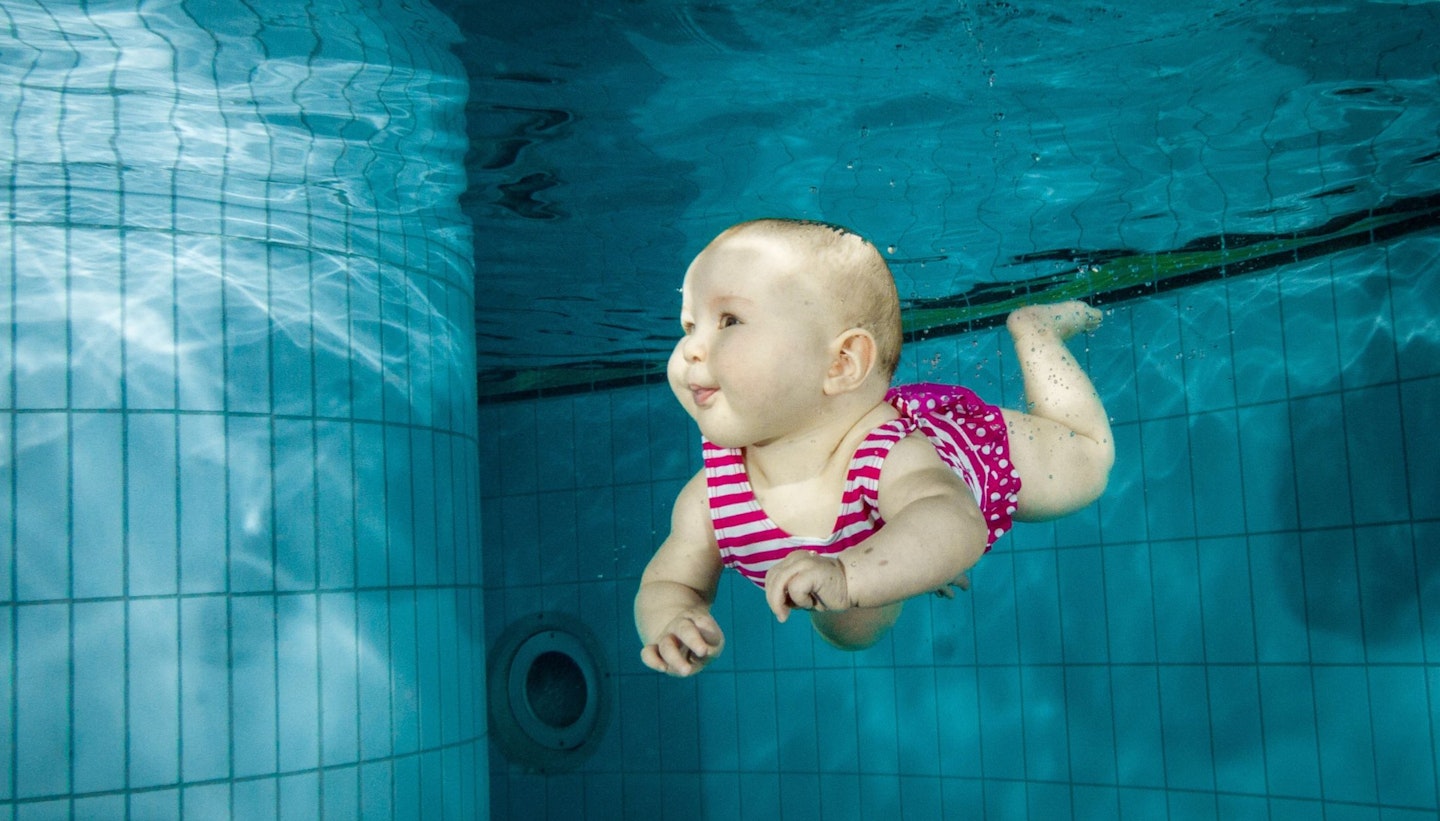
What is the best age to start teaching my toddler to swim?
According to Ali Beckman, Director at Puddle Ducks, ages 2 to 3 are ideal for introducing your toddler to swimming.
“The younger they are, the better,” Ali says. “At that age, the children are getting a lot stronger, they want to explore more, they're inquisitive, and everything that they are developing on land, personality-wise, we can use in the pool to help them explore the water environment and learn to swim.”
Kaylee Kennedy, swim expert and founder of Watermellow, also supports early introduction. “We believe that every toddler is unique, and their progress in learning to swim will vary. Our approach is to start gradually, ensuring that each child learns the basics before moving on to submersions.”
Swim-expert approved ways to introduce your toddler to water
-
Start gradually: Kaylee emphasises the importance of a gradual approach. “We believe that every toddler is unique, and their progress in learning to swim will vary. Our approach is to start gradually, ensuring that each child learns the basics before moving on to submersions.”
-
Use gentle techniques: Kaylee stresses the value of using gentle methods. “Introducing toddlers to water can be a delicate process, and we have found that using gentle techniques and maintaining a positive environment are key to helping them feel comfortable.”
-
Maintain a positive environment: Creating a positive and supportive atmosphere is crucial. Kaylee says, “Maintaining a positive environment is key to helping them feel comfortable.”
-
Cup submersions: Kaylee recommends starting with cup submersions. “Our favourite way to get little ones used to the water is through cup submersions. By gently pouring water over the toddler’s face using a cup, this helps them get used to the sensation of water on their face in a controlled and non-threatening way. It’s a crucial first step before any actual submersions.”
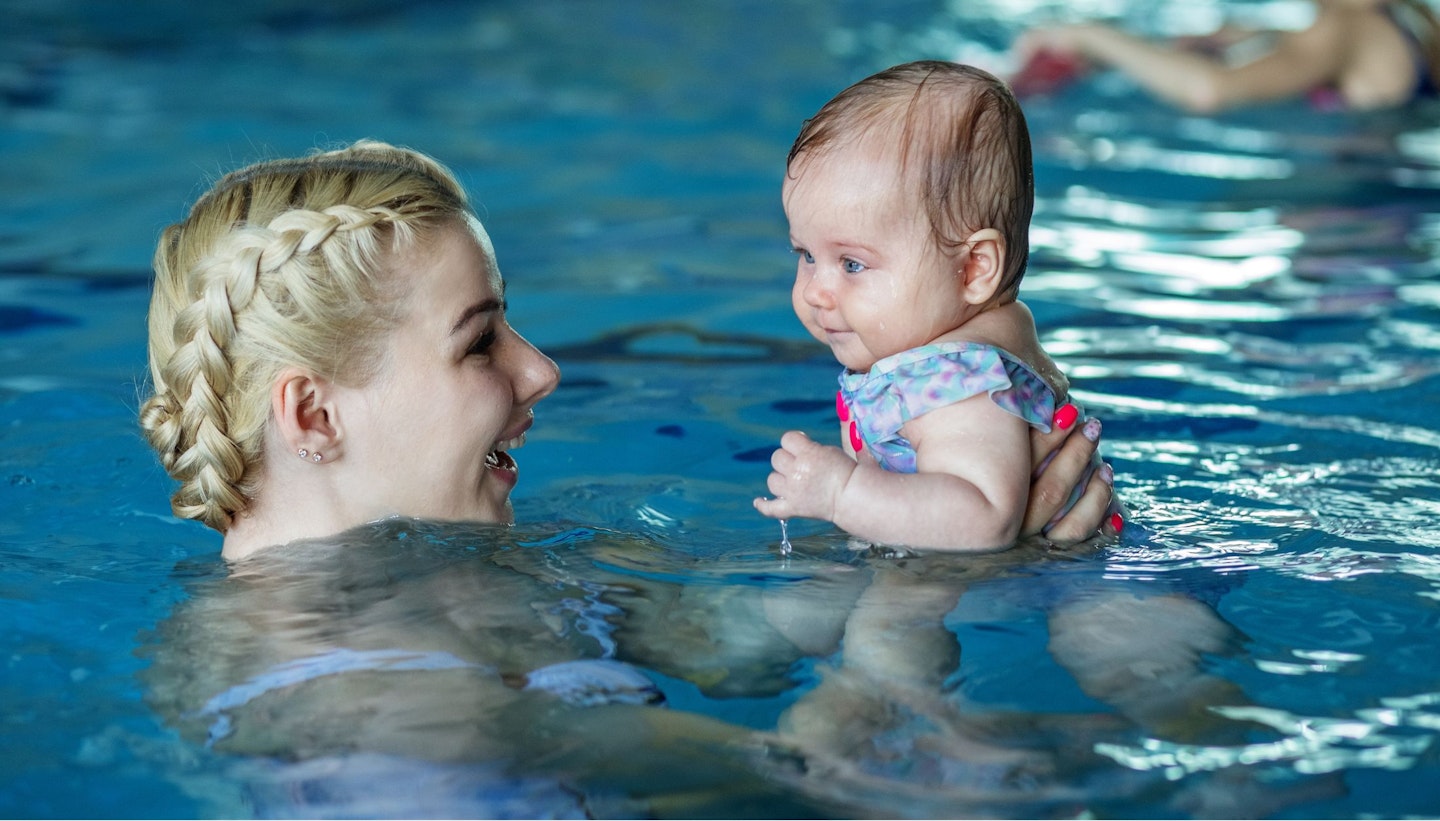
How can I build my toddler’s confidence in the water?
Building confidence is crucial for helping your toddler learn to swim. Ali recommends choosing a pool with integrated steps or a beach entry, which allows your child to explore the water on their own.
“Obviously, the parent’s there to support them, but when you have shallow steps or shallow water, a child can sit and they can move around, they can even crawl on those shallow steps and just explore themselves. They're not being dragged into deep water and put underwater by a parent; they're choosing to do everything themselves.”
To further boost confidence, Ali suggests simple games like throwing a ball for your toddler to push back or placing a sinking object on shallow steps for them to find.
“The movement of reaching for the ball is a basic swimming skill, and if your tot chooses to place their head underwater to look for the object, this too will increase their confidence in the water.”
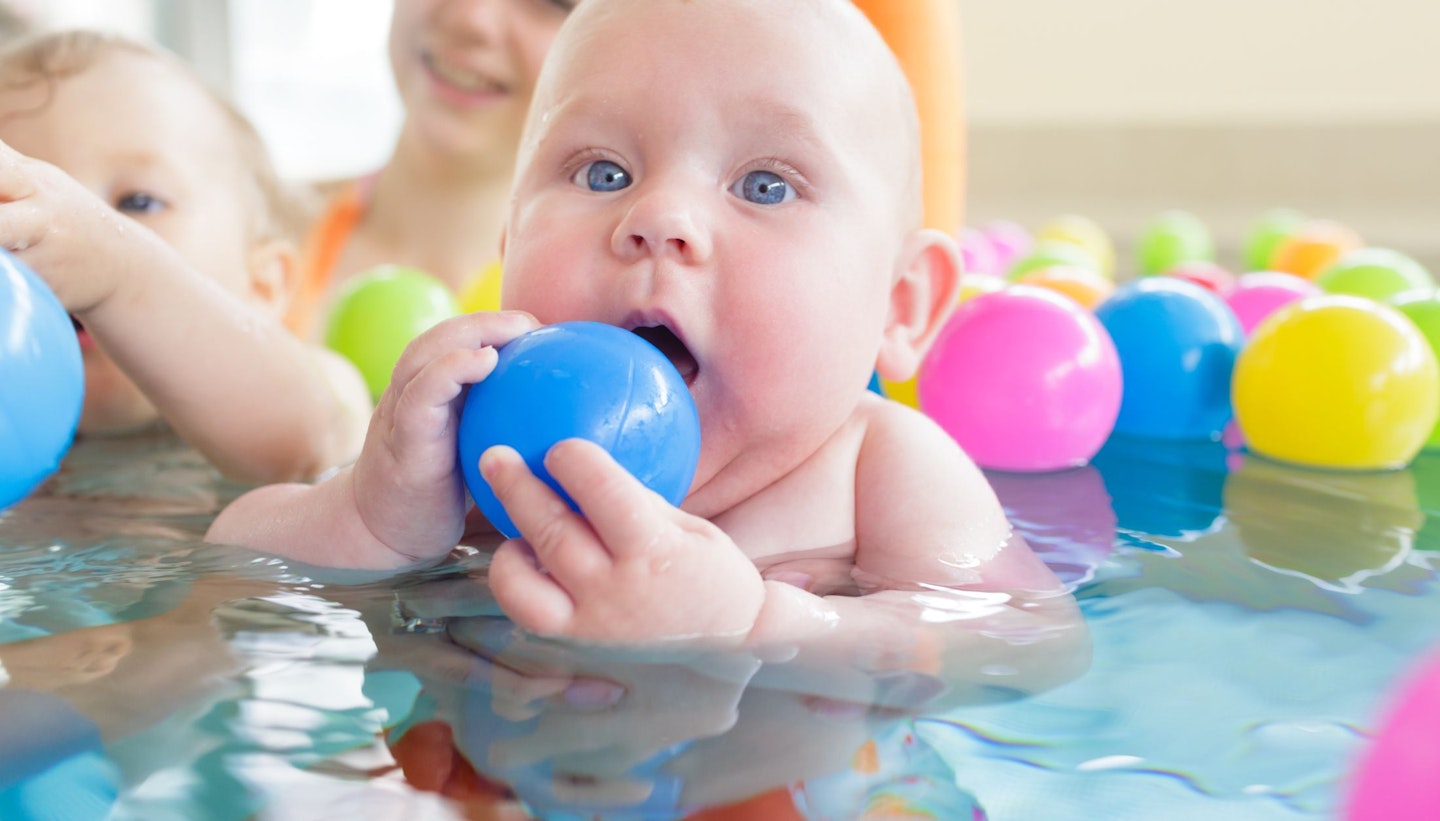
What’s the best way to introduce swimming skills to my toddler?
Ali stresses the importance of learning through play. “It’s just not going to work; children learn through play,” she says. “Even in our structured lessons, it's play, but toddlers don't realise they’re learning the things that we're doing when we're playing games in which they are learning to swim. So the worst thing a parent can do is try to teach the child to swim.”
She recommends using a pool with a metal bar around the side that your toddler can hold onto, encouraging them to be independent while still receiving support.
“So much can be gained from a child holding onto the side of the pool, because they start to turn towards you and if they want to reach out to you, they then put their feet on the wall and will do a little push towards you. Even the parent putting their hand under the child’s seat and sending them to the wall in a seated position encourages them to reach—they’re learning that they need to get from their parents to the wall.”
Ali adds, “They’re doing everything they need to do to swim to that wall; it's just that we're still supporting them. And if they've got the confidence, they may put their head down, which means that the handing of the seat can be raised a little bit and a hand put under their chest to make them flatter in the water. We’re still supporting them, but they’re doing all the fundamental movements to help them get there.”
Should I ever force my toddler underwater?
Avoid forcing your toddler underwater, as it can undermine their confidence.
“Never take a toddler under the water without their absolute permission,” says Ali. “If you force a toddler underwater, you can spend months and months building up confidence and then completely destroy that within seconds. By forcing them underwater, they need to know when to take a breath and when to be prepared for it. Many parents feel that swimming is all about being underwater, and it's not. It's exciting underwater, but we swim on the surface, and everything we do on the surface can be moved into swimming underwater, but it should always be at the baby's choice.”
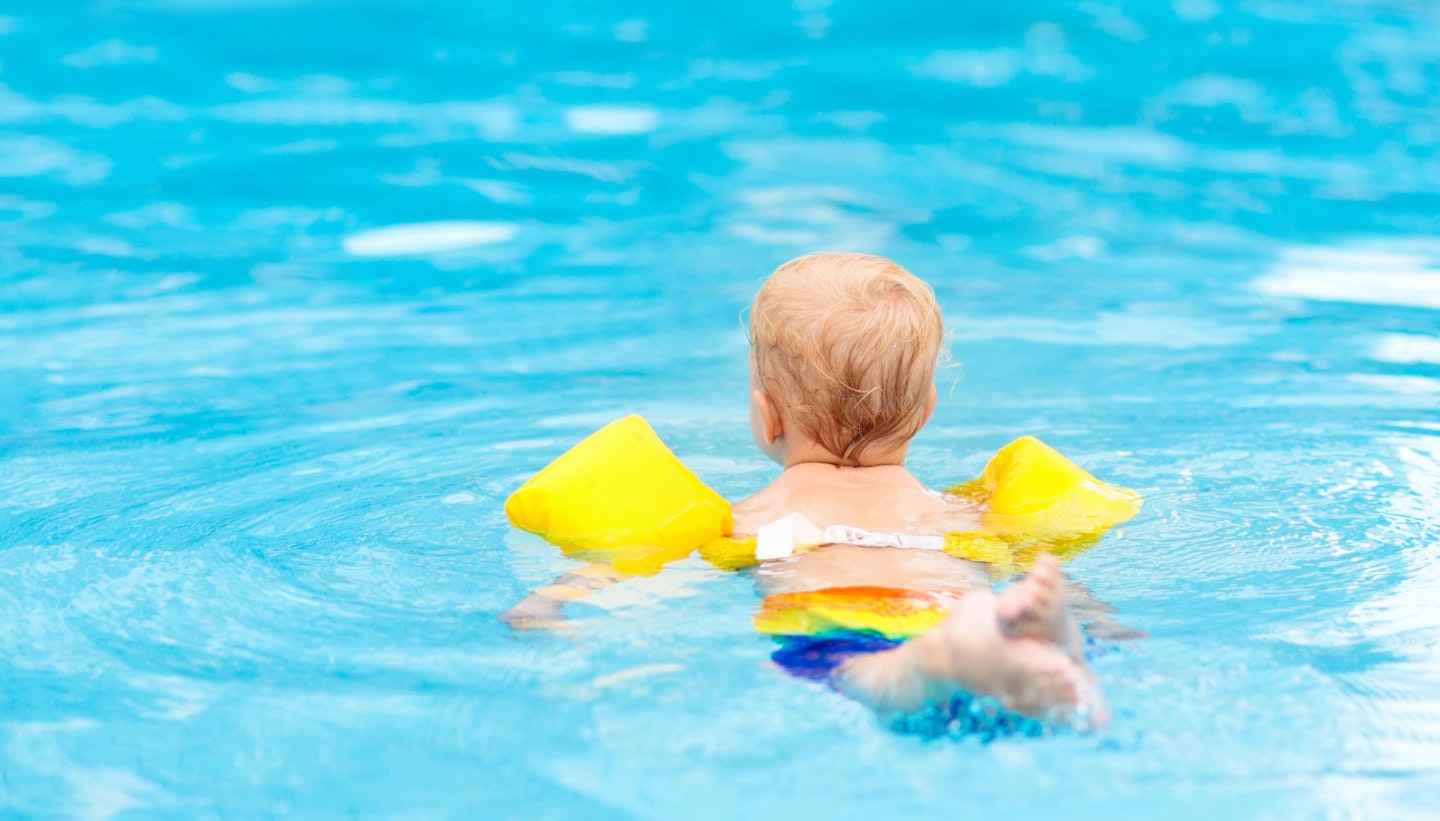
Should I use buoyancy aids for my toddler?
Ali advises caution with buoyancy aids like armbands and arm disks.
“The problem with fixed buoyancy aids is that children don’t learn about their own buoyancy in the water and what they're capable of doing. If it's a non-fixed buoyancy aid, like a water noodle, all they have to do is push that away when they're ready to swim independently. Whereas with a fixed buoyancy aid, they have to ask their parents to remove it, and by the time you’ve removed it, sometimes the moment is gone and they’ve then decided they’re not ready for it.”
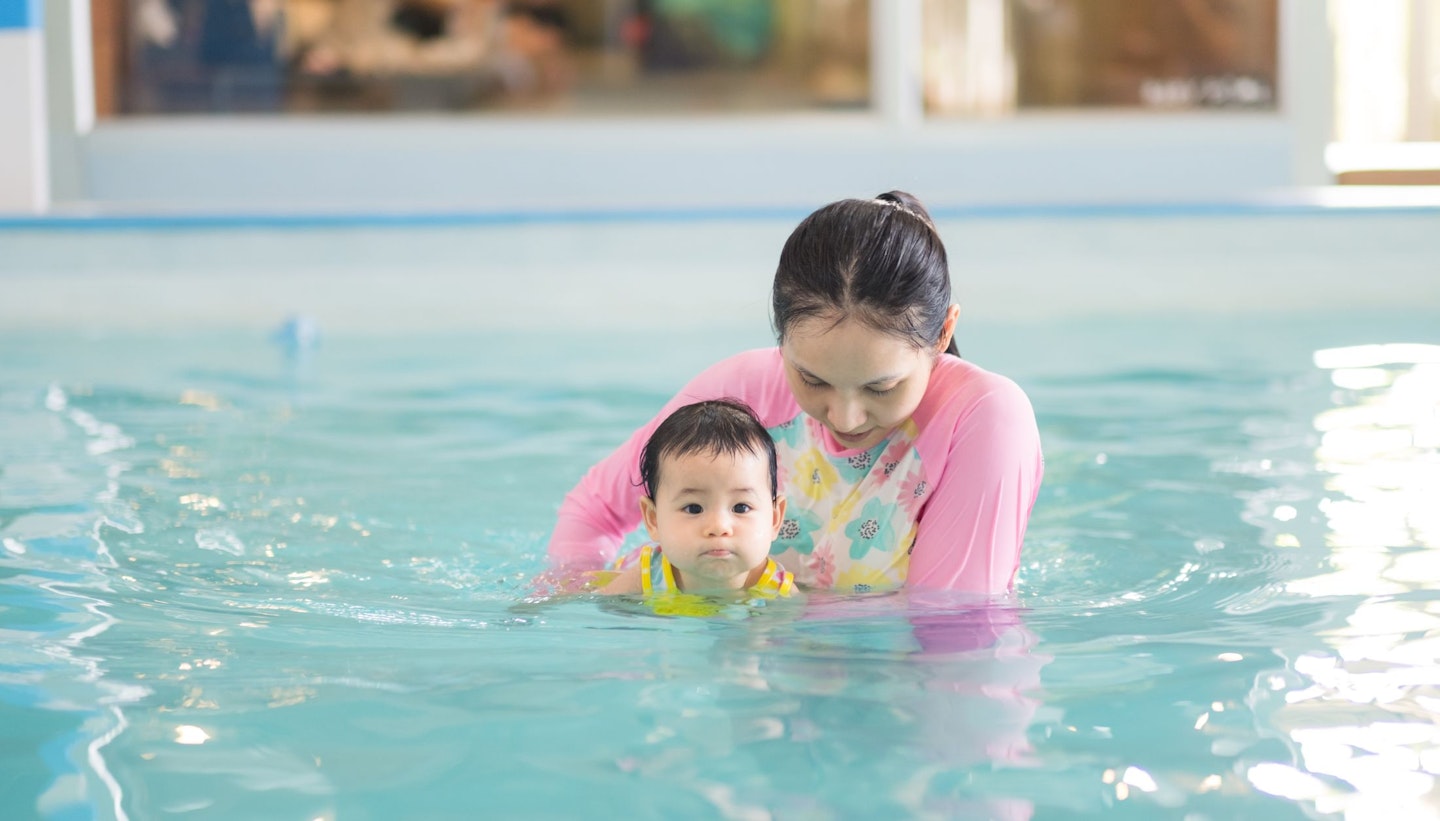
How can I help my toddler overcome a fear of water?
Kaylee suggests understanding and patience are essential. “It’s important to understand that tears and hesitation are normal when trying new things, especially something as sensory-rich as swimming. Patience and reassurance can help your toddler feel more secure.”
She also recommends gradual exposure and incorporating enjoyable activities. “Start with short trips to the pool or beach to let your child get accustomed to the environment. Even just playing near the water can help build comfort. Begin and end each swim session with something your child enjoys, like playing with their favourite toys. This helps create positive associations with being in the water and makes the experience more fun and engaging.”
What are the most important water safety tips for toddlers?
“Always keep your toddler within arm’s reach. Constant supervision is crucial—never let distractions take your attention away from your child while they are in or near the water. Maintaining close proximity allows for immediate assistance if needed,” Kaylee says.
She also suggests using a t-shirt for added security. “A t-shirt can serve as a safe and secure place for your toddler to grab onto if they need support or feel unsure in the water. It provides an additional sense of security for them.”
Additionally, Kaylee advises practising recovery places. “Ensure your child knows how to grab onto the wall, stairs, or you when they need to rest or feel unsafe. Practise this regularly to build their confidence and familiarity with these safe spots. Keep pool sessions short, as toddlers can tire quickly.”
What is water acclimation and why is it important?
Water acclimation helps your toddler get comfortable with water gradually. Kaylee explains, “Water acclimation is essentially getting your little one adjusted to the water, ensuring the safest swimming experience for them. In order to create a positive experience with the water and your tot, there are many ways to make this process smoother, but temperature regulation is our top priority.”
Kaylee recommends starting in the bathtub. “Swimming in the bathtub with your baby is a great and safe way to begin their swimming journey. The bathtub is an ideal place to start because you can control the environment, creating a positive swimming space. Bathtubs are quiet, clean, safe, and warm. Babies prefer warmer temperatures, so it is recommended to use water that is between 86 and 90 degrees Fahrenheit.”
For colder pools, she suggests a wetsuit lined with fleece. “To keep your little one warm and comfortable in a pool, I highly recommend a wetsuit lined with fleece. This provides the warmth your tot is used to from bath time, like a cosy hug in the water, ensuring they stay warm and happy.”
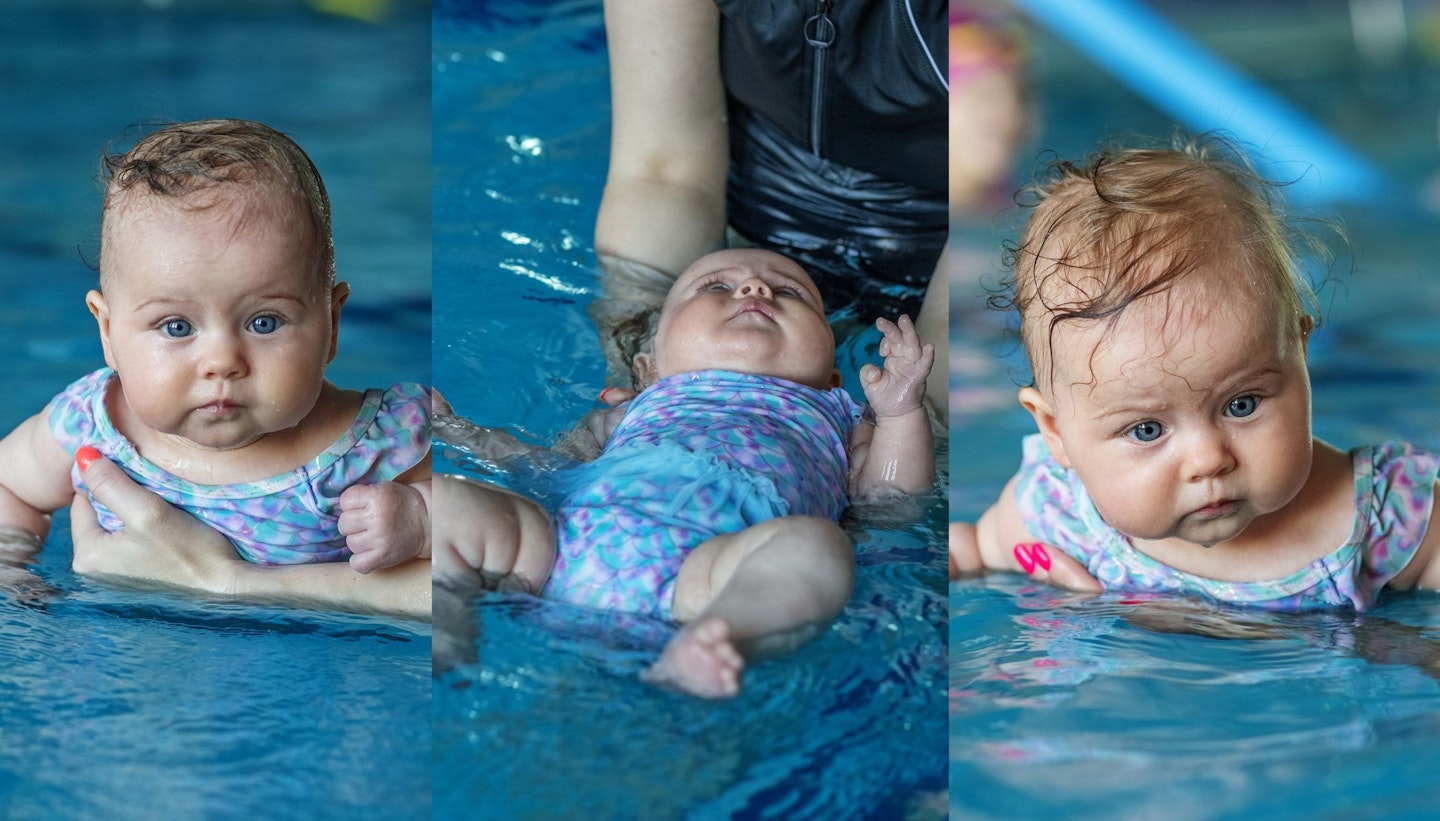
FAQs
What should toddlers wear while swimming?
“Most swimming pools, certainly swimming lessons, will ask for toddlers to be double wrapped,” says Ali. “So they should have an under nappy and an over nappy and the over nappy should have sealed edges. It looks like it's got a cuff around the waist and a cuff around the legs and what that does is that seals, so if they urinate, it will come out but the pool chemicals will deal with this, however, if they poo, the nappy will stop leakage into the pool. Whereas if they're not double-wrapped, anything can happen and we tend to say to keep them double wrapped for at least three months after they are fully potty trained.”
How much are toddler swimming lessons roughly?
Toddler swimming lessons aren’t fixed in price and can vary anywhere from £12 to £20, depending on where you’re based. “At Puddle Ducks we are charging around £14, which seems to be average,” says Ali. “Sadly the cost of pool hire has now risen massively over the past few years and unfortunately it's put a lot of swim schools out of business and the ones that have survived have had to put their prices up.”
How to find toddler swimming lessons near you.
While there isn’t a website with all the toddler swimming lessons listed in the UK, Puddle Ducks do offer nationwide swimming lessons, so you should be able to find a swimming lesson for you tot near you.
Can a toddler go swimming with a cold or ear infection?
While Ali says it’s fine to take your tot swimming with a cold, you should probably avoid it if they have an ear infection. Sometimes you don't even know that they've got an inner ear infection, because there's no funky stuff but with an outer ear infection you can see it and it’s usually quite gunky and horrible. A lot of the time when babies have got ear infections they're upset and grizzly so you wouldn't want to take them.”
About the experts
Kaylee Kennedy is the founder of Watermellow, an innovative online swim school. Based in Saskatchewan, she has over a decade of experience as a swim instructor and entrepreneur. After launching K&K Swim School in 2014, Kaylee adapted to the pandemic by creating Watermellow, which empowers parents to teach their babies to swim at home. She is a mother of two and lives in Saskatchewan.
Ali Beckman is the Director at Puddle Ducks, a leading UK swim school. With a wealth of experience in aquatic education, she develops innovative teaching methods and ensures top-quality instruction across the organisation. Ali is also a swimming teacher, coach, and tutor, and serves as the President of the STA. She is dedicated to making every child's swimming journey safe, enjoyable, and enriching.
About the author
Anne Lora Scagliusi is a Senior Digital Writer at Mother & Baby. She is a Scotland-based journalist with over a decade of international writing experience, specialising in women’s health, maternal mental health, and wellness. Her work has been featured in Vanity Fair, Marie Claire, and Glamour and has appeared on several Vogue global editions. She is mum to a one-year-old bambino and lives between Italy and the UK.
